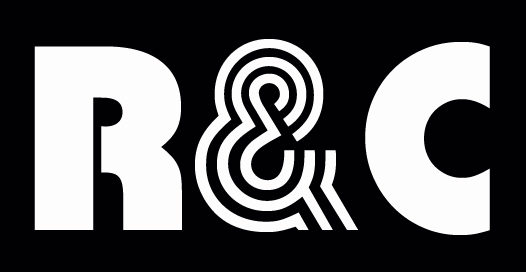
Surface Vessel: Frank Vega & Xingyi Zhao, curated by Inés Arango-Guingue
Opening Friday, June 13th 6–9pmSurface Vessel
Frank Vega and Xingyi Zhao
by Inés Arango-Guingue
The Ornitomorph Ocarina that I can see and listen to on the internet once served as a ritual flute for the Tairona tribe of the Colombian Sierra Nevada. The three holes on the bird-shaped ceramic let the air through, which produces the sound of…a bird. The ocarina is shaped and sounds like the animal whose spirit it aims to invoke. Pre-Columbian rituals favored this sort of alignment: if the shape of the object is attuned to its function, then its spirit will be present. It detonates a sacred game of representation that is not about the resulting image. Rather, in this worldview, the objects are alive. Their shapes aid in being vessels to the spirits they inhabit and are tuned to the effects sought after during ritual.
A similar attunement between surface and depth is what intertwines the pieces of Xingyi Zhao and Frank Vega in Surface Vessel, a title and a contradiction. What is this surface a vessel for? How can a vessel contain a surface or a surface contain a vessel? What happens to the spirit, the aura, or the gravitas of these objects when their structural surface and depth are repeatedly messed around with?
In Zhao’s notes, small poems that she sometimes jots down to accompany the making of a piece, she writes:
“What if the grid is a god whom we worship? […] the perfect alignment […] Edges, irregular. Grids, lines, horizontal, and vertical. […] A weaving is a ball of strings being reorganized. A drawing is a bottle of ink being reorganized.”
The jacquard weavings shown here have images of quotidian ceramics; objects designed to hold other things are captured in a flat-surfaced textile, stripped of their depth and given a new function. Other images imprinted in both fabric and paper are appropriated from daily life forms—flowers, leaves, and architectural volumes— and are then translated into an unfixed exploration of surfaces.
Vega’s Resting Objects series exists to challenge the established role of objects within Western material culture. If it’s the painting’s unchangeable surface that gives it its depth, its aura, and its price tag, then these series (washed, wet, and rewashed) refuse to streamline their value in this
way. In this exhibition space, Vega is treating his resting objects in a similar way to how ritualistic indigenous items were treated, deserving to rest, live, and die with dignity. And to go on vacation. The washing machine is not there to clean, but to act as a Jacuzzi.
Frank Vega (b. 1992, Ecuador) has exhibited at No Lugar (Ecuador), Hyde Park Art Center (Chicago), Devening Projects (Chicago), MDW Fair at Mana Contemporary (Chicago), Koik Contemporary (Mexico City), The Green Gallery (Milwaukee), El Lobi (Puerto Rico), among others. He has been awarded a
Teaching Fellowship at the School of the Art Institute of Chicago, as well as the Frankenthaler Scholarship, the Florence M. House Scholarship, and the Leroy Neiman Fellowship from Ox-Bow School of Art.
The practice of Frank Vega is rooted in the concept of Desencanto, the deconstruction of representation that challenges our systems of value and utilitarianism. His pieces seek to visibilize how objects and materials in culturally specific craftsmanship collectively absorb memory and cultural identity through surface. His works are set up as living ecosystems that are given new meaning with movement, improvisation, and sound.
Xingyi Zhao’s (b. 1999, China) work has been exhibited throughout the Midwest, including recent shows at Zolla/Lieberman Gallery and ARC Gallery in Chicago. She has been an artist-in-residence at the Penland School of Craft, Praxis Fiber Workshop, and The Weaving Mill. She was a fellow at Spudnik Press Cooperative. Zhao holds a BFA and MFA from the School of the Art Institute of Chicago and received the 2022 SPARKS Grant from Chicago Artists’ Coalition.
Xingyi Zhao’s weavings unite the persistent study of line and time in her mastery of the jacquard loom: the warp and weft’s linear threads mimic the construct of the axis of time and space. Zhao’s work is rooted in the history of textiles, the language of materials, and the lexicon of how-to manuals. Her process develops from orthogonal order systems like grids, weaving drafts, knitting diagrams, quilting, and architectural blueprints. The structuralist approach to her practice is evident in her recent pieces, where she delves into the formality of domestic vessels—bowls, plates, teacups, flower vases, baskets— imprinting their images in her weavings, an invitation to contemplate textiles’ inherent use as containers.
Inés Arango-Guingue is a Colombian curator and writer. In recent years, her research has focused on art and philosophy that acknowledges the social power of the unknown, the opaque, and the illegible.
She was co-curator of Learning Together: Art Education and Community at the University of Illinois–Chicago’s Gallery 400, a major exhibition centering the progressive art pedagogy of a diverse group of Chicago artist educators from the mid-1960s through the 2010s. In addition, she organized exhibitions at the Mildred’s Lane Complex(ity) in Narrowsburg, New York; Museo del Banco de la Republica in Bogotá; Flora Ars + Natura in Bogotá; and Casona de Linea in Havana, Cuba. She was a 2023 Art Table fellow and a 2022 Abakanowicz fellow at SAIC’s Institute for Curatorial Research and Practice. She is a contributing author to the upcoming book Tuning Calder’s Clouds, to be published by The Calder Foundation and the Curtis R. Priem Experimental Media and Performing Arts Center.
